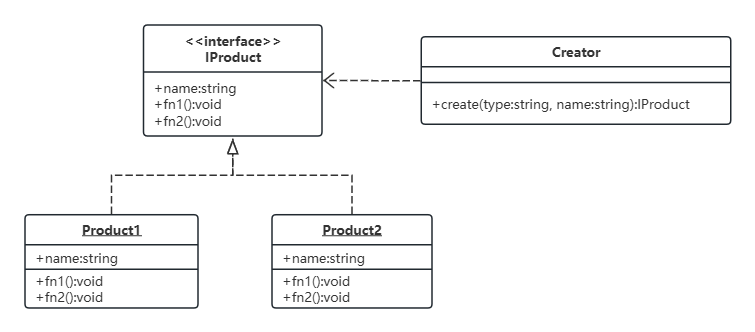工厂模式
遇到 new Class 的地方,就要考虑到工厂模式
概念
UML 类图

代码
ts
// 产品接口
interface IProduct {
name: string;
fn1: () => void;
fn2: () => void;
}
// 实现IProduct接口的Product1产品类
class Product1 implements IProduct {
name: string;
constructor(name: string) {
this.name = name;
}
fn1() {
console.log("Product1的fn1");
}
fn2() {
console.log("Product1的fn2");
}
}
// 实现IProduct接口的Product2产品类
class Product2 implements IProduct {
name: string;
constructor(name: string) {
this.name = name;
}
fn1() {
console.log("Product2的fn1");
}
fn2() {
console.log("Product2的fn2");
}
}
// 工厂类
class Creator {
// 依赖倒置原则
create(type: "p1" | "p2", name: string): IProduct {
if (type === "p1") {
return new Product1(name);
}
if (type === "p2") {
return new Product2(name);
}
throw new Error("请传入正确的type");
}
}
const creator = new Creator();
const a = creator.create("p1", "a");
console.log(a);
a.fn1();分析
应用原则:
依赖倒置原则
开放封闭原则
工厂和类分离,解耦
可以扩展多个类(派生类,或者平行类)
工厂的创建逻辑也可以自由扩展
应用
jQuery 的 $
Vue 的 h 函数(_createElementVNode)
React 的 createElement
重要细节
typescript 扩展 window 属性 declare
对 vnode 的理解